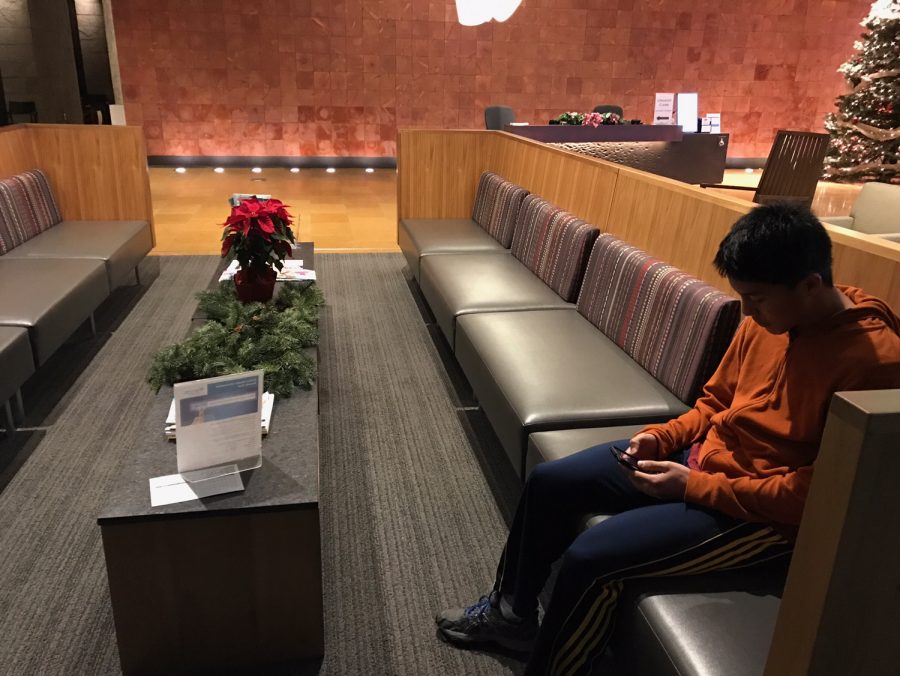Nobody likes going to the doctor.
It can always be an inconvenience especially with the number of busy schedules students have.
Sophomore Justin Hsu wakes up early in the morning for a doctor’s appointment on a cross country race day looking to qualify for PALs. When he arrives at the course, there’s a problem. His race starts in two minutes and he has to run without warming himself up.
With telemedicine, the use of technology and telecommunications in order to obtain health care from distant places, patients have direct access to communication with their doctors from home and would allow individuals like Hsu to manage their time more efficiently.
In recent years, states have increasingly adopted physician telehealth services in the field of dermatology, the branch of medicine associated with skin disorders. This system benefits patients that live in rural and suburban areas with a lack of access to health and specialty care.
Telemedicine can be suited for students living far from a dermatology office, especially given that traffic can make it hard to travel distances quickly in the Bay Area.
Sophomore Paul Trembley said, “Traveling in the Bay Area is hard with traffic sometimes. The traffic lights on El Camino and such places bother me because it can cause me to be late for my appointments. I usually have to wait 15 minutes and I just sit on my phone. It would be more convenient and fit my schedule if I had better and faster healthcare online. Having a doctor’s appointment can also interfere with school and homework.”
Dr. Keyvan Samanian, a dermatologist said, “Telemedicine in the field of dermatology mixes teleconferencing, document-sharing, and mobile technology in order to improve healthcare quality, largely for those who lack access to care. [It’s] changing the delivery of healthcare services.”
Dermatologist telehealth services have been increasing in recent years and are being adopted by more states according to Vera Gruessner on mHealth Intelligence, a website for publications related to medicine.
Telemedicine is becoming a dominant method of health care in dermatology. Many believe it’s capable of replacing the traditional method of appointments and going to the doctor’s office.
“Telemedicine dermatology can transmit images and information across the world. Riding on the latest medical advancements. If applied with proper plan and vision, telemedicine can transform the whole arena of medical care,” said Samanian.
According to Lauren Silverman, a writer for the public broadcaster KERA News, telemedicine has already hit several schools in northern Texas. Instead of physically visiting the doctor’s office, students can remotely communicate and connect with their doctor from the nurse’s office at school. The parents no longer need to leave work to pick up their kid and the kid doesn’t miss school as a result. Today, there are reportedly 57 screens and carts for telemedicine set across school campuses in rural areas in northern Texas.
Along with providing efficient health care to suburban and rural areas, telemedicine can also lower treatment costs for communities.
Jeila Kerdar, a Walnut Creek dermatologist’s assistant, said, “Telemedicine can provide more efficient health care for patients in the fact that patients have easy access and it is convenient. For those that work full time, telemedicine makes it easier to go to doctor’s visits and get treatment for medical conditions that they may not have addressed if they didn’t have the convenience.”
USA News writer Matthew Perrone states that virtual doctor visits can cost about $40 to $50, close to half of a regular doctor visit.
The use of telemedicine in dermatology is spreading to different countries, and major corporations are exploring the effects it can provide on society. It will continue to be tested by more and more companies in upcoming years.
“The England Multicentre Teledermatology Trial is evaluating the use of real-time telemedicine for delivering dermatological health care. So far, the results show that consultations through video link are acceptable compared to regular hospital consultations, they only proved inappropriate in about 9% of the cases. This trial is impacting a huge number of major hospitals around the world and is why telemedicine is being applied to them,” said Samanian.
The regular appointments are time-consuming for students that don’t live close to the office. With telemedicine, students don’t need to worry about the drive to the doctors nor waiting in the office.
Hsu said, “[Telemedicine is] great and I would have time for both life and running without any conflicts. I’ll actually have time to warm up and race to the best of my ability, topping the rest of my competition.”













Amaury Avat • Apr 21, 2017 at 5:25 pm
Great article Naveed!!! I will look into this telemedicine stuff some more!?